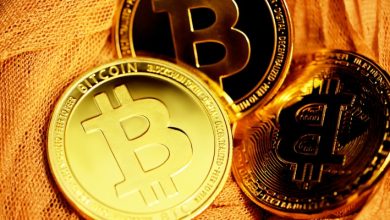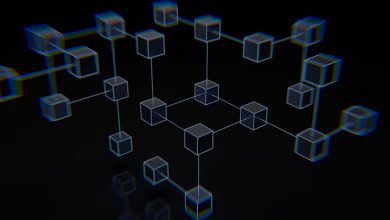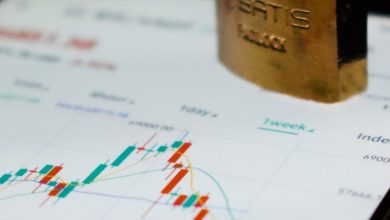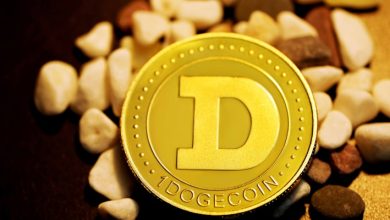The Rise of NFT Marketplaces: Trends and Insights
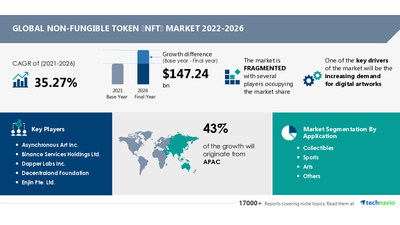
- Understanding the NFT Market: A Comprehensive Overview
- Exploring the Evolution of NFT Marketplaces
- Key Trends Shaping the Future of NFT Marketplaces
- Insights into the Booming NFT Industry
- Navigating the Complexities of NFT Marketplaces
- The Impact of NFT Marketplaces on the Art World
Understanding the NFT Market: A Comprehensive Overview
The NFT market has been experiencing significant growth in recent years, with more artists, collectors, and investors participating in this digital asset space. Understanding the NFT market is crucial for anyone looking to navigate this rapidly evolving landscape effectively.
One key aspect to consider when delving into the NFT market is the concept of non-fungible tokens themselves. NFTs are unique digital assets that are indivisible and cannot be exchanged on a like-for-like basis. This uniqueness is what sets NFTs apart from other cryptocurrencies like Bitcoin or Ethereum.
Another important factor to consider is the role of blockchain technology in the NFT market. Blockchain technology provides a secure and transparent way to verify ownership and authenticity of NFTs. This technology ensures that each NFT is one-of-a-kind and cannot be duplicated or tampered with.
When exploring the NFT market, it is essential to understand the various platforms and marketplaces where NFTs are bought, sold, and traded. These NFT marketplaces provide a space for creators to mint and sell their digital assets, as well as for collectors and investors to discover and purchase unique NFTs.
Overall, gaining a comprehensive overview of the NFT market involves understanding the unique nature of NFTs, the role of blockchain technology, and the various platforms and marketplaces available. By staying informed and educated about these key aspects, individuals can make informed decisions when participating in the exciting world of NFTs.
Exploring the Evolution of NFT Marketplaces
The evolution of NFT marketplaces has been a fascinating journey to witness. These platforms have undergone significant changes and improvements over time, catering to the growing demand for digital assets. One of the key trends in the NFT marketplace space is the increasing diversity of available assets. From digital art and collectibles to virtual real estate and even music, NFT marketplaces now offer a wide range of options for buyers and sellers alike.
Another important development in the NFT marketplace landscape is the rise of specialized platforms. While some marketplaces aim to be all-encompassing, others focus on specific niches such as gaming or fashion. This specialization allows for a more tailored experience for users, making it easier to find and trade assets within their areas of interest.
Moreover, the integration of blockchain technology has been a game-changer for NFT marketplaces. By leveraging the security and transparency of blockchain, these platforms provide a trustworthy environment for buying and selling digital assets. This technology also enables the verification of ownership and provenance of NFTs, adding an extra layer of authenticity to transactions.
As NFT marketplaces continue to evolve, we can expect to see further innovations and improvements in the space. From enhanced user interfaces to new ways of tokenizing assets, the future looks bright for the world of digital collectibles. Whether you’re an artist looking to showcase your work or a collector searching for unique pieces, the growing ecosystem of NFT marketplaces offers something for everyone.
Key Trends Shaping the Future of NFT Marketplaces
The future of NFT marketplaces is being shaped by several key trends that are revolutionizing the way digital assets are bought and sold. These trends are driving innovation and growth in the NFT space, making it an exciting time for creators, collectors, and investors alike.
- Increased mainstream adoption: NFTs are gaining popularity among a wider audience, attracting attention from celebrities, brands, and traditional art institutions.
- Interoperability and cross-chain support: NFT marketplaces are exploring ways to enable seamless transactions across different blockchains, allowing for greater flexibility and accessibility.
- NFT fractionalization: The ability to divide NFTs into smaller, more affordable shares is opening up new investment opportunities and democratizing access to digital assets.
- Enhanced security and authenticity: Innovations in blockchain technology are improving the security and provenance of NFTs, giving buyers confidence in the authenticity of their purchases.
- NFT marketplace curation: Curated marketplaces are emerging to help users discover high-quality NFTs and navigate the vast array of digital assets available for sale.
These trends are driving the evolution of NFT marketplaces, creating new opportunities for creators to monetize their work, for collectors to diversify their portfolios, and for investors to participate in the growing digital economy. As the NFT market continues to mature, we can expect to see even more innovation and growth in the years to come.
Insights into the Booming NFT Industry
The NFT industry has been experiencing significant growth in recent years, with more and more artists, creators, and collectors entering the market. This surge in interest has led to the emergence of various NFT marketplaces, each offering unique opportunities for buying, selling, and trading digital assets.
One of the key insights into the booming NFT industry is the diverse range of digital assets available for purchase. From digital art and collectibles to virtual real estate and even tweets, NFT marketplaces offer a wide variety of assets to cater to different tastes and preferences. This diversity has attracted a broad range of buyers and sellers, contributing to the overall growth of the NFT market.
Another important trend in the NFT industry is the increasing use of blockchain technology to verify ownership and authenticity of digital assets. By using blockchain technology, NFT marketplaces can provide a secure and transparent platform for buying and selling digital assets, giving buyers confidence in the authenticity of their purchases. This use of blockchain technology has helped to establish trust within the NFT market and has contributed to its rapid growth.
Furthermore, the rise of celebrity and brand involvement in the NFT industry has also been a significant trend. Many celebrities and brands have started to create and sell their own NFTs, leveraging their popularity and influence to attract buyers. This trend has brought a new level of mainstream attention to the NFT market and has helped to drive its continued growth and expansion.
Overall, the insights into the booming NFT industry point to a market that is rapidly evolving and expanding, with new trends and opportunities emerging regularly. As more artists, creators, and collectors continue to explore the potential of NFTs, the industry is likely to see further growth and innovation in the coming years.
Navigating the Complexities of NFT Marketplaces
Navigating the complexities of NFT marketplaces can be a daunting task for both new and experienced users alike. With the rapid growth of the NFT market, it is essential to understand the various platforms available and how to effectively utilize them.
One key aspect to consider when navigating NFT marketplaces is the fees associated with buying and selling digital assets. Different platforms may have varying fee structures, so it is important to research and compare these costs before making any transactions. Additionally, some marketplaces may require users to pay gas fees for transactions on the blockchain, which can add to the overall cost of buying or selling NFTs.
Another important factor to consider is the user interface and user experience of the marketplace. A user-friendly platform can make it easier to browse, buy, and sell NFTs, while a clunky interface can lead to frustration and confusion. It is essential to choose a marketplace that is intuitive and easy to navigate to ensure a smooth experience.
Furthermore, it is crucial to consider the reputation and security of the NFT marketplace. With the rise of fraudulent activity in the NFT space, it is essential to choose a platform that has a solid reputation and takes security seriously. Researching reviews and feedback from other users can help determine the trustworthiness of a marketplace.
In conclusion, navigating the complexities of NFT marketplaces requires careful consideration of fees, user interface, reputation, and security. By taking the time to research and compare different platforms, users can make informed decisions and maximize their success in the ever-evolving world of NFTs.
The Impact of NFT Marketplaces on the Art World
The emergence of NFT marketplaces has had a profound impact on the art world, revolutionizing the way artists create, sell, and collect digital art. These platforms have provided artists with a new way to monetize their work, allowing them to reach a global audience and bypass traditional gatekeepers. As a result, artists are able to retain more control over their art and earn a fairer share of the profits.
NFT marketplaces have also democratized the art world, making it more accessible to a wider range of collectors. With the ability to buy, sell, and trade digital art with just a few clicks, anyone can participate in the market and support their favorite artists. This has led to a surge in interest in digital art, with collectors eager to own unique and rare pieces that can only be found on NFT marketplaces.
Furthermore, NFT marketplaces have sparked a new wave of creativity in the art world, as artists explore the possibilities of blockchain technology and create innovative new works. These platforms have opened up new avenues for artistic expression, allowing artists to experiment with new mediums and formats that were previously impossible. As a result, the art world is experiencing a renaissance, with artists pushing the boundaries of what is possible and redefining the concept of art itself.
Overall, the impact of NFT marketplaces on the art world cannot be overstated. These platforms have revolutionized the way art is created, bought, and sold, empowering artists and collectors alike. As the technology continues to evolve and more artists embrace the possibilities of blockchain, the art world is sure to see even more exciting changes in the years to come.

